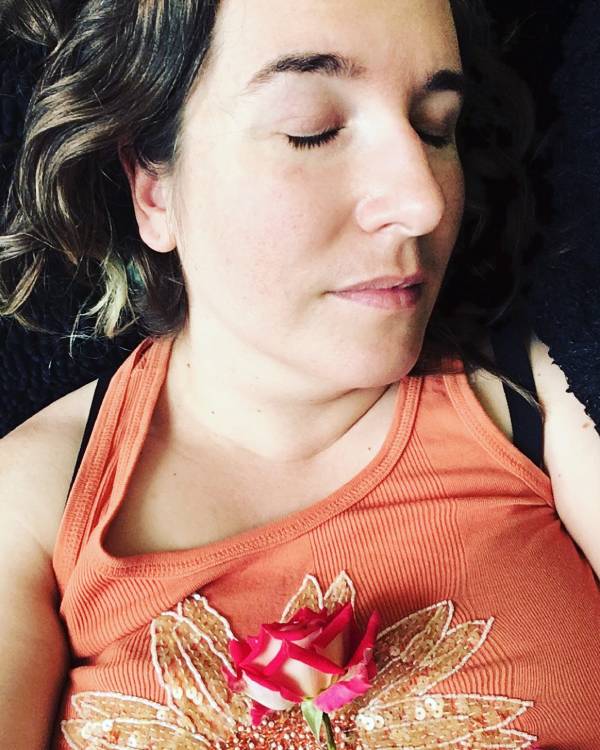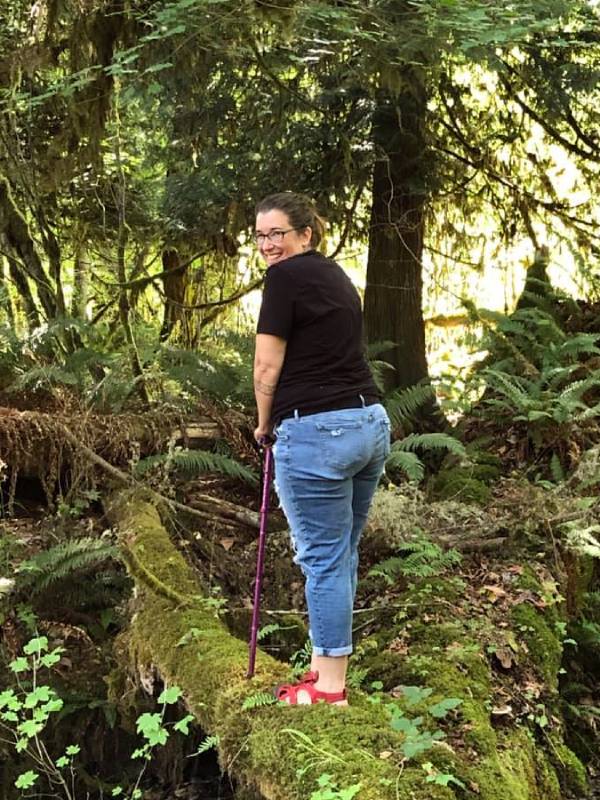When I was in my 20s and early 30s, I was all about saying yes. Yes, I’ll take on that extra part-time position at work. Yes, I’ll sign up to be room-mom at my children’s elementary school. Yes, I’ll go to grad school to better my future. Yes, I’ll go on hikes during the day and go out dancing at night. I essentially measured my success by all the ‘yesses’ in my life. Being busy meant I was achieving something.
Little did I know, however, how drastically my life was about to shift. Soon, even saying yes to little things, like taking a shower or going to a necessary appointment, would become difficult.
A Changing Reality
At 34 years old, my life was good. I was newly remarried and had two young children. I had my dream job as a director of education in a prison and was halfway through a graduate program. I spent nearly every weekend performing or producing burlesque shows or going camping or hiking. I was keeping myself busy and enjoying the go-go-go of life.
Then suddenly, there was a shift. I started getting tired more often and more easily, and the periodic migraine episodes I had since I was 11 came back in full force. I assumed both were stress-related, the result of having just a few too many things on my plate. So I let go of a few obligations. But things didn’t improve. In fact, they got worse. I found it harder to get up in the morning for work; some days I was literally unable to get out of bed. When I did manage to get up, my muscles would spasm and cramp involuntarily, causing my limbs to twitch and jump as if I was dancing to music only I could hear.
But it wasn’t just a physical shift. Work tasks that had once come easily made my brain swim. I easily lost words as I was about to speak, as if they had just evaporated off my tongue and out of my mind.
As my body and mind slowly shut down, I had to give up more and more of the activities I loved. I started working from home in a part-time role (though I eventually had to quit altogether). I took a leave of absence from school. I turned most of my parenting duties to my spouse. I traded hiking and dancing for resting in hopes that I would regain some strength.
It was as if my body had ripped the ‘yes’ away from me, leaving me unable to do much of anything but lie in bed.
Fighting Against Myself
This, in my mind, was not acceptable. This was not who I was. I was Angie: Super-mom, career woman, performer. I was determined to fix this and return to the things that had, up until that point, defined me.
I fought against this mystery illness with everything I had. I saw specialist after specialist, each of whom ordered blood work and imaging, tests, and procedures. I tried medication after medication to try to get my symptoms under control.
A few months into my still-to-be-identified-illness I had a lumbar puncture which resulted in a cerebrospinal fluid leak. Anytime I was in a position other than completely horizontal my head would pound with extreme pain and pressure that made me want to pass out. I was scheduled to produce a show just a few days later, and instead of listening to my body and cancelling the show, I continued as if nothing was wrong. I thought that if I pushed myself hard enough, I could push through any obstacles my body set up in my way.
My spouse drove me almost two hours to the show location. I worked in three-minute increments before reaching such levels of pain that someone had to escort me to the parking lot, where I would lie completely flat on the pavement for a while before getting up and trying again. This repeated itself throughout the night, with me trying to push through and then my body slamming me down. I cried in frustration the entire way home.
In retrospect, doing that to myself was madness. But at the time I so desperately wanted my “old life” back that I was willing to put myself through sheer torture, ignoring all the signs my body was giving me and probably making my conditions worse in the process.
Learning to Listen to the Body
Eventually I was diagnosed with several conditions, including ankylosing spondylitis, fibromyalgia, and chronic intractable migraine. Even with these diagnoses, though, I somehow thought I could have my old life back; my life of yes where I was able to go-go-go and do-do-do.
My therapist kept saying, “Angie, your body is trying to talk to you,” but I didn’t know what my body was trying to say. Or, more accurately, I just didn’t want to listen. Because listening to my body would mean that I had to accept that my life was different now; that I was different now.
But resisting the messages of the body is exhausting. I found myself so tired and in so much pain that I simply had to stop, listen, and try to understand what my body was saying.
Slowly, and with much trepidation, I began listening to the messages from my body. Over and over it would tell me, “slow down and take care of yourself.”
So, after a lifetime of saying yes, I slowly began to practice saying no. No, I won’t force myself to do something when my body was already in pain. No, I won’t participate in something (even when I wanted to) because I know it will force me to be bed-bound for three days after.
I began to work with my body instead of fighting against it. In doing so, I realized my body was not some separate entity; my body was — is — me, and I owe it to myself to listen. I began to learn how to better care for myself and navigate my new life with chronic illnesses.
Sometimes this means that I spend days in bed, order takeout for dinner, and cancel plans because my body has told me it needs rest. Sometimes it means that I have to tell my boss I can’t teach another class this quarter because two is all my body can handle. It may mean I have to tell my teenager that I can’t go on a walk with them. Or it may be something small, like telling myself I can’t put on makeup that day because simply showering is going to take up all my energy.
And in saying no to some things, my body gets the care it deserves, which allows me to say yes to other things. Because I’ve allowed my body to rest for several days, I’m able to go for a short hike. Because I’ve learned to only schedule myself for about five hours of work a week, I’m able to teach again. Because I said no to going for a walk with my teen, I have the energy later that week to help them make a favorite dinner.
In learning to say no and listen to the messages my body is giving me, I have found a balance that I never had in my pre-illness life. I have learned to prioritize my wellness; to care for myself and pay attention to the things I need. I have learned to set healthy boundaries with myself and those around me in order to take care of myself. And most importantly, I’m no longer fighting against my body. By learning to accept when my body says ‘no,’ I’ve learned how to say ‘yes’ to myself.
Want to Get More Involved with Patient Advocacy?
The 50-State Network is the grassroots advocacy arm of CreakyJoints and the Global Healthy Living Foundation, comprised of patients with chronic illness who are trained as health care activists to proactively connect with local, state, and federal health policy stakeholders to share their perspective and influence change. If you want to effect change and make health care more affordable and accessible to patients with chronic illness, learn more here.








